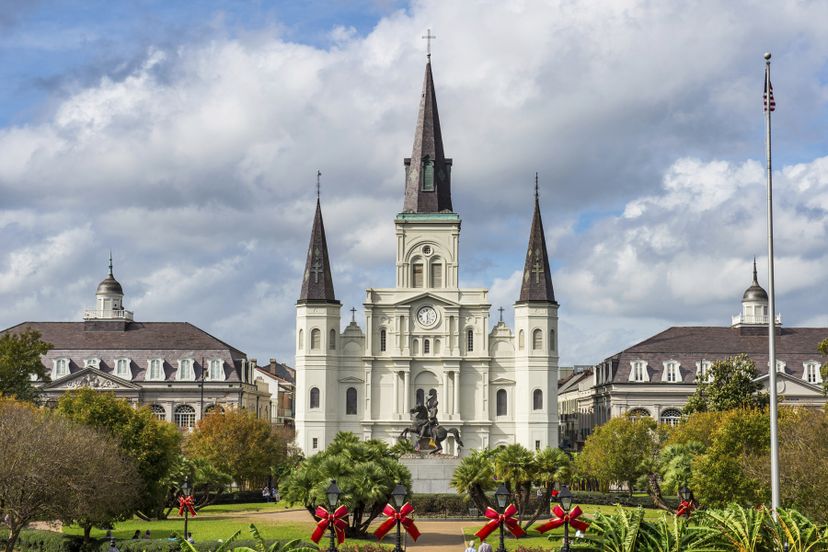
About This Quiz
The 'Big Easy' has a reputation for weirdness and wildness. How much do you know about the history of New Orleans?The Hernando Cortez expedition first traveled through the area in the 1540s.
The first French colony wasn't built until 1699, 17 years after they first visited the New Orleans area.
Its location at the mouth of the Mississippi meant that New Orleans was destined to become a vital strategic location and economic powerhouse.
Advertisement
The city's location means that hurricanes make landfall nearby on an average of every 2.5 to 3 years.
As part of the War of 1812, a British fleet attacked the city in an effort to take control of America's river system.
Even with their overwhelming numbers, the British were soundly defeated, and all for naught -- a treaty ending the war had been signed weeks prior but the combatants didn't know about it.
Advertisement
For four decades, New Orleans was a Spanish city, a fact that contributes to the area's eclectic culture.
King Louis XV owed a debt to Spain and paid it by giving away New Orleans; French citizens were outraged and Spain sent troops to calm the unrest.
Police workers went on strike, meaning the National Guard had to maintain peace during Mardi Gras.
Advertisement
In 2013, the population was around 370,000, far lower than the 2000 count of 480,000.
The city was named after Philippe II, duc d'Orleans, who served as a regent to King Louis XV.
The first Mardi Gras was held in 1857, just a few years before the Civil War started.
Advertisement
Along with indigo and rice, tobacco was a vital crop to the earliest European settlers.
There were fewer than 100 students in the system when four teachers took the lead in educating the town's children.
New Orleans was included as part of the Louisiana Purchase, which was completed in 1803.
Advertisement
The establishment of the United States sent many Americans westward to the Mississippi River, where Kaintucks shipped products and people south to New Orleans.
The goods coming out of New Orleans weren't valuable enough to ship to Europe, meaning that the port wasn't very profitable.
At an area of nearly 830,000 square miles, the Purchase doubled the size of the United States and gave the blossoming country a valuable southern port.
Advertisement
Some krewes protested the racial requirement by refusing to participate or by holding private balls.
Many French-Canadians moved to the New Orleans area from Canada to escape British occupation in Canada.
Large parts of the Lower Ninth Ward were flooded when the hurricane ruined levees in 1965.
Advertisement
Morial was the first black mayor; he was elected in 1978.
The move gave the government power to spend public money on facilities, which greatly improved as a result of the influx of cash.
The engineering failures meant tremendous flooding that resulted in the costliest natural disaster in U.S. history.
Advertisement
Cotton was the king of crops in New Orleans in the 1800s, fueling a shipping boom and helping to expand the city.
The city was mostly white in 1960; now, whites account for only a third of the city's people and blacks make up 60 percent of the citizenry.
In a town of only 154,000, 8,000 dropped dead, in part due to poor living conditions and large populations of mosquitoes.
Advertisement
The widespread flooding was a major reason that nearly 1,500 people died during and after the storm.
Although Morton claimed he invented jazz, it preceded him — jazz started in New Orleans in the late 1800s, as mix of ragtime and blues. New Orleans native Armstrong took jazz to the world.
Storyville had a raucous reputation, and it was officially "closed" in 1917 at the insistence of the U.S. Navy.
Advertisement